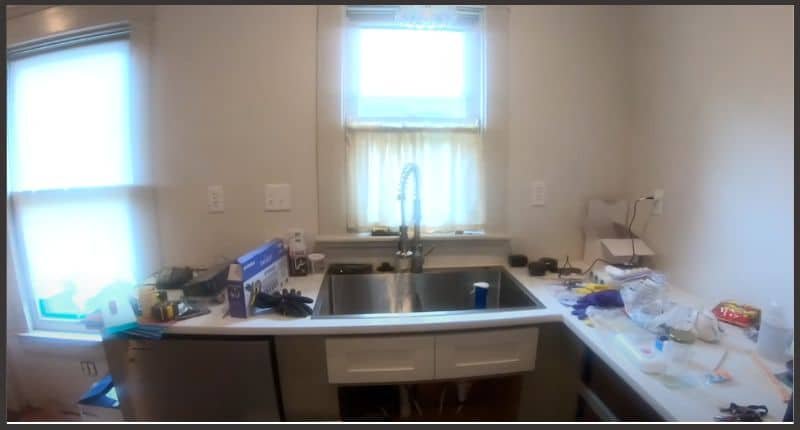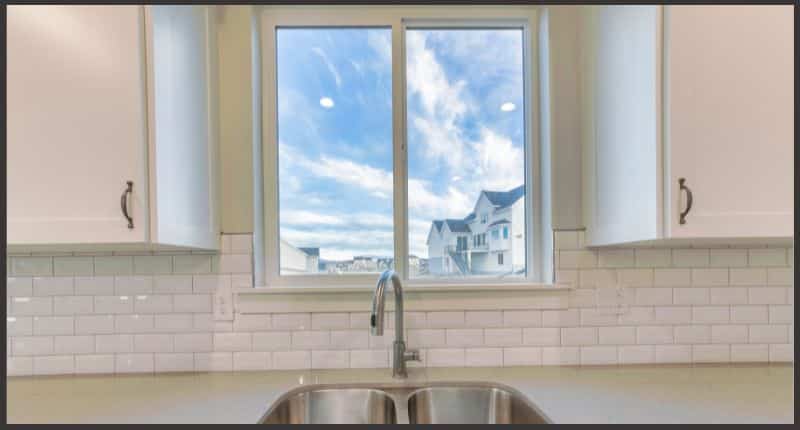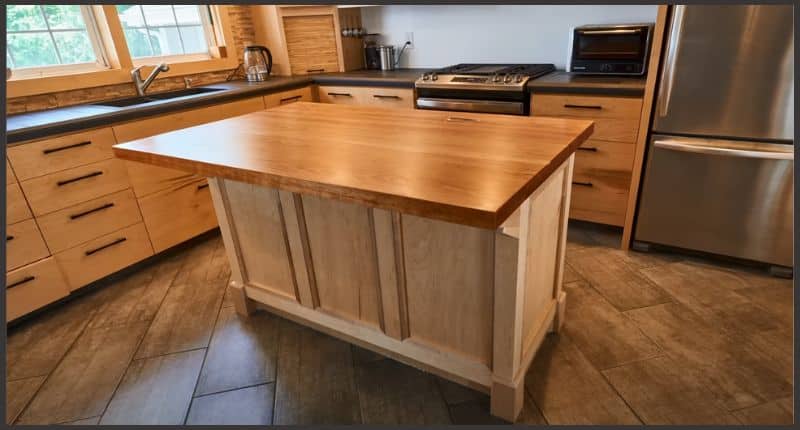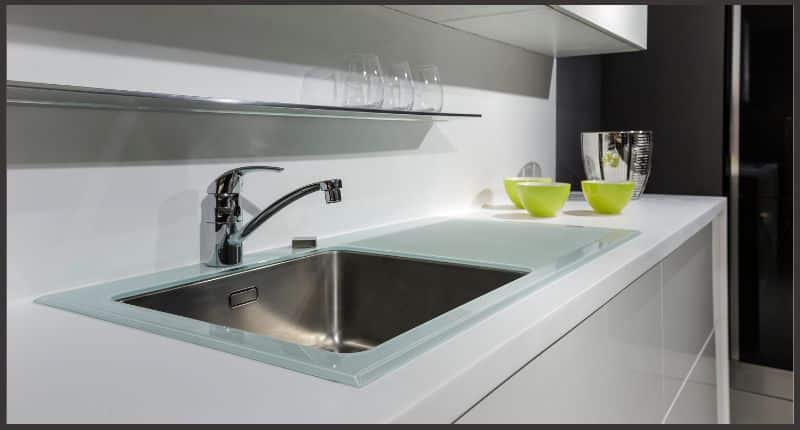How to vent a kitchen sink under a window? The serene view out of your kitchen window can complement the culinary ambiance, but what if your sink’s plumbing is in dire need of a vent right there? A properly vented kitchen sink is not just a building code requirement; it’s a practical necessity. Venting is crucial for maintaining water flow, allowing waste waters to drain smoothly, and preventing sewer gases from entering your home.
This guide will provide you with a step-by-step approach on how to vent a kitchen sink under a window, ensuring you maintain both the aesthetics and functionality of your kitchen.
Table of Contents
Tools and Materials:
To vent a kitchen sink under a window, you will need the following tools and materials : a jigsaw, a drill, a screwdriver, PVC pipe, PVC glue, pipe fittings, a hacksaw, plumber’s tape, and a vent cap. First, use the jigsaw to cut a hole in the bottom of the cabinet directly below the sink. Then, drill a hole in the wall just above the window. Next, assemble the PVC pipe and fittings to create the vent pipe that will run from the sink to the outside of the house. Once assembled, secure the pipe using the screwdriver and plumber’s tape. Finally, attach the vent cap to the end of the pipe outside the house to ensure proper ventilation.
- Pipe cutter or saw
- Measuring tape
- Pencil or marker
- Drill with appropriate bits
- Screwdrivers
- PVC pipes and fittings
- PVC primer and cement
- Stud finder (if needed)
- Pipe hangers and brackets
- Pipe insulation
- Utility knife
- Safety goggles
- Gloves
Safety Precautions:
Before delving into the world of plumbing, remember that safety comes first. Plumbing work may involve sharp tools, chemicals, and exposure to potential hazards. Always wear safety goggles to protect your eyes from splinters or debris and gloves to handle sharp edges and chemicals like PVC primer and cement. Familiarize yourself with the layout of your plumbing system to avoid accidentally damaging electrical wiring or other plumbing during the installation.
Steps to How to Vent a Kitchen Sink Under a Window:

A. Locate the Existing Plumbing Vent:
Identify the current ventilation system for your kitchen plumbing to work effectively with it. Typically, plumbing vents are located on the roof; find the connection points where your new vent will tie in. Once you have identified the current ventilation system, you can determine the best way to integrate your kitchen plumbing with it. It is important to locate the connection points where the new vent will tie in, ensuring a seamless and efficient integration. By understanding the existing ventilation system, you can plan your kitchen plumbing effectively, alleviating any potential issues or disruptions.
B. Plan the New Vent Installation:
Measure the distance from your sink to under the window where your new vent will reside. Keep in mind local plumbing codes, which dictate the size of the vent pipe and how it should be routed. It is essential to follow the local plumbing codes to ensure proper installation of the vent pipe. These codes specify the required size of the vent pipe and the appropriate routing method. By measuring the distance from your sink to under the window, you can determine the length of pipe needed and plan the most efficient route for the vent.
C. Permit Approval:
Ensure you obtain any necessary permits or approvals from local authorities before starting your project. This ensures your plumbing modifications are legal and up to code. Failure to obtain the necessary permits or approvals can result in fines or penalties, as well as potential complications when selling your property in the future. Additionally, it is important to follow local building codes to ensure the safety and functionality of your plumbing system. Taking these steps will give you peace of mind and help you avoid any legal or structural issues down the line.
D. Preparation:
Shut off the water supply to your sink to prevent any accidental spills or leaks. Remove any items, such as cabinetry or shelving, that may obstruct the installation of your new vent pipe.

E. Creating the Vent Path:
Carefully cut a hole for the new vent pipe using your drill and saw, making sure it’s the correct size for your pipe.
F. Vent Pipe Installation:
Attach the new vent pipe to the sink’s drain using appropriate fittings. Make sure it is well secured with hangers or brackets.
G. Integrating with Existing Vent System:
Connect your new vent pipe to the existing system, ensuring a tight and secure fit to prevent leaks or back siphoning.
H. Testing and Sealing:
With the vent pipe installed, test your setup by running water and observing the flow. Make sure there are no leaks, and then proceed to seal and insulate the pipe to prevent condensation and ensure energy efficiency.
I. Final Touches:
Reattach any cabinetry or fixtures removed during the process. Turn the water supply back on and give your new vent one more test-run. Give the area a thorough clean, and preserve documentation of the new installation for future reference or inspections. Once you have reattached the cabinetry or fixtures, it is important to double-check that they are secure and properly aligned.

This will ensure a seamless finish to your installation. After turning the water supply back on, run the vent once more to ensure proper functionality and to address any potential issues immediately. Finally, give the entire area a thorough clean, removing any debris or dust that may have accumulated during the installation process. Don’t forget to preserve documentation of the new installation, including permits, receipts, and any relevant instructions, as these will be useful for future reference or inspections.
Additional guide:
- Enhance Your Kitchen Decor: Learn how to display cutting boards on your kitchen counter for a stylish and functional kitchen setup. Read more
- Boost Water Pressure: Discover effective methods to increase water pressure in your kitchen sink, ensuring efficient and convenient water flow for your daily tasks. Read more
- Perfect Fit for Your Kitchen: Get a comprehensive guide on how to measure your kitchen sink accurately, ensuring a perfect fit for your space and plumbing needs. Read more
Conclusion:
Venting a kitchen sink under a window might seem like a daunting task, but with the right tools, meticulous planning, and a steady hand, it is entirely achievable. Remember, proper ventilation is crucial for the health of your home’s plumbing system. Following local codes ensures that your infrastructure is safe, up to standard, and resilient.
Enjoy the new functionality of your kitchen, bask in the view out your window, and rest assured that beneath your sink, a proper ventilation system is now in place. Now hopefully you know how to vent a kitchen sink under a window after follow our guide.
FAQs
Q1: Why do I need to vent my kitchen sink under a window? A1: Venting your kitchen sink is essential to allow air into the plumbing system, which helps maintain proper water flow and prevents sewer gases from entering your home. Venting under a window may be necessary due to the sink’s location and the need to adhere to plumbing codes.
Q2: Can I vent my kitchen sink anywhere in the kitchen? A2: The ideal location for venting a kitchen sink is often near the sink’s drain. However, the specific location may be influenced by your kitchen’s layout and plumbing code requirements.
Q3: How do I locate the existing plumbing vent for my kitchen sink? A3: You can often find the existing vent by following the drain pipe from your sink. It will typically extend upward and exit through your roof. You may also consult plumbing diagrams or hire a professional plumber to locate it.
Q4: What tools and materials do I need to vent my kitchen sink under a window? A4: The tools and materials needed may include a reciprocating saw, PVC pipe, pipe fittings, a vent cap, a wrench, PVC primer, PVC cement, and a measuring tape.
Q5: Do I need any permits or approvals to vent my kitchen sink under a window? A5: Depending on your local building codes and regulations, you may need permits or approvals for plumbing work. It’s important to check with your local building department to ensure compliance.
Q6: How can I ensure that the new vent installation is properly sealed and insulated? A6: Proper sealing and insulation can be achieved by using PVC primer and cement for secure connections. Additionally, you can insulate the vent pipe with foam insulation to prevent condensation and maintain proper airflow.
Q7: Can I vent multiple fixtures, like a dishwasher or garbage disposal, through the same vent pipe? A7: In many cases, you can vent multiple fixtures through the same vent pipe, but it must adhere to local plumbing codes. Consult your local regulations or a professional plumber for guidance.
Q8: What do I do if I encounter leaks or drainage issues after the vent installation? A8: If you experience leaks or drainage problems, it’s essential to check the connections, ensure they are properly sealed, and troubleshoot any potential issues. If problems persist, consider consulting a professional plumber for assistance.
Q9: Can I hire a professional plumber to install the kitchen sink vent under the window? A9: Yes, hiring a professional plumber is a common and recommended approach to ensure that the venting is done correctly and complies with local codes and regulations.
Q10: How will venting my kitchen sink under a window improve its performance? A10: Proper venting prevents airlocks, helps maintain smooth water flow, and ensures that sewer gases do not enter your home, which ultimately improves the overall performance and safety of your kitchen plumbing system.



